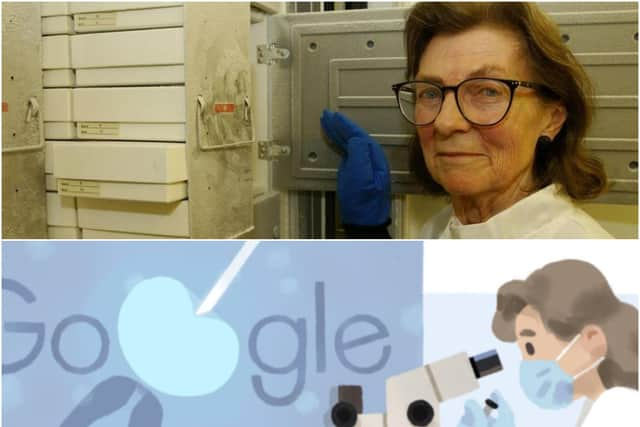Anne McLaren: who is UK biologist who helped pioneer IVF - and why is Google celebrating her with a Doodle?
Dame Anne McLaren was an innovative scientist best known for her research on the development of embryos.
But who was the scientist, what is her connection with IVF and why is Google celebrating her with a doodle?
Here’s everything you need to know.


Who was Anne McLaren?
Advertisement
Hide AdAdvertisement
Hide AdAnne McLaren was a pioneering scientist whose research on embryonic development helped lead to the development of in-vitro fertilisation (IVF).
Born in London on 26 April 1927, McLaren had a small role in the 1936 H.G. Wells’ sci-fi film The Shape of Things to Come when she was a young child, something which the scientist credited as one of the early inspirations for her love of science.
She went on to study zoology at the University of Oxford, where her passion for science grew.
In the 1950s, she began to work with mice in order to further understand the biology of mammalian development.
McLaren and her colleague, John Biggers, successfully grew mouse embryos in lab equipment, which showed the possibility of creating healthy embryos outside of the mother’s womb.
These findings were published in 1958 and carved the way for the development of in vitro fertilization (IVF) technology that scientists used successfully with humans 20 years later.
Scientists started using IVF with humans in the late 1970s, but the practice was initially very ethically controversial.
McLaren was appointed as the only research scientist on the Warnock Committee, which was a governmental body dedicated to the development of policies related to the advances in IVF technology and embryology.
Advertisement
Hide AdAdvertisement
Hide AdHer role was essential in the enactment of the 1990 Human Fertilisation and Embryology Act, which is the legislation which limits in-vitro culture of human embryos to 14-days post embryo creation.
In 1991, McLaren was appointed Foreign Secretary of The Royal Society, becoming the first woman to ever hold office within the institution’s 330-year-old history.
In 1994, the British Association for the Advancement of Science - which is now the British Science Association - elected McLaren as president.
During her role as president, McLaren aimed to make the topics of science, engineering and technology accessible to everyone across the UK.
She died at the age of 80 in 2007, when she and her ex-husband Donald Michie were killed in a road accident.
Why is Google celebrating Anne McLaren with a doodle?
Google is celebrating the life and work of Anne McLaren with a doodle on the date of her 94th birthday.
Google said: “Today’s Doodle celebrates the 94th birthday of British scientist and author Anne McLaren, who is widely considered one of the most significant reproductive biologists of the 20th century.
“Her fundamental research on embryology has helped countless people realize their dreams of parenthood.”
“Happy birthday, Anne McLaren. Thank you for all your incredible work and for inspiring many new generations to come because of it,” Google added.